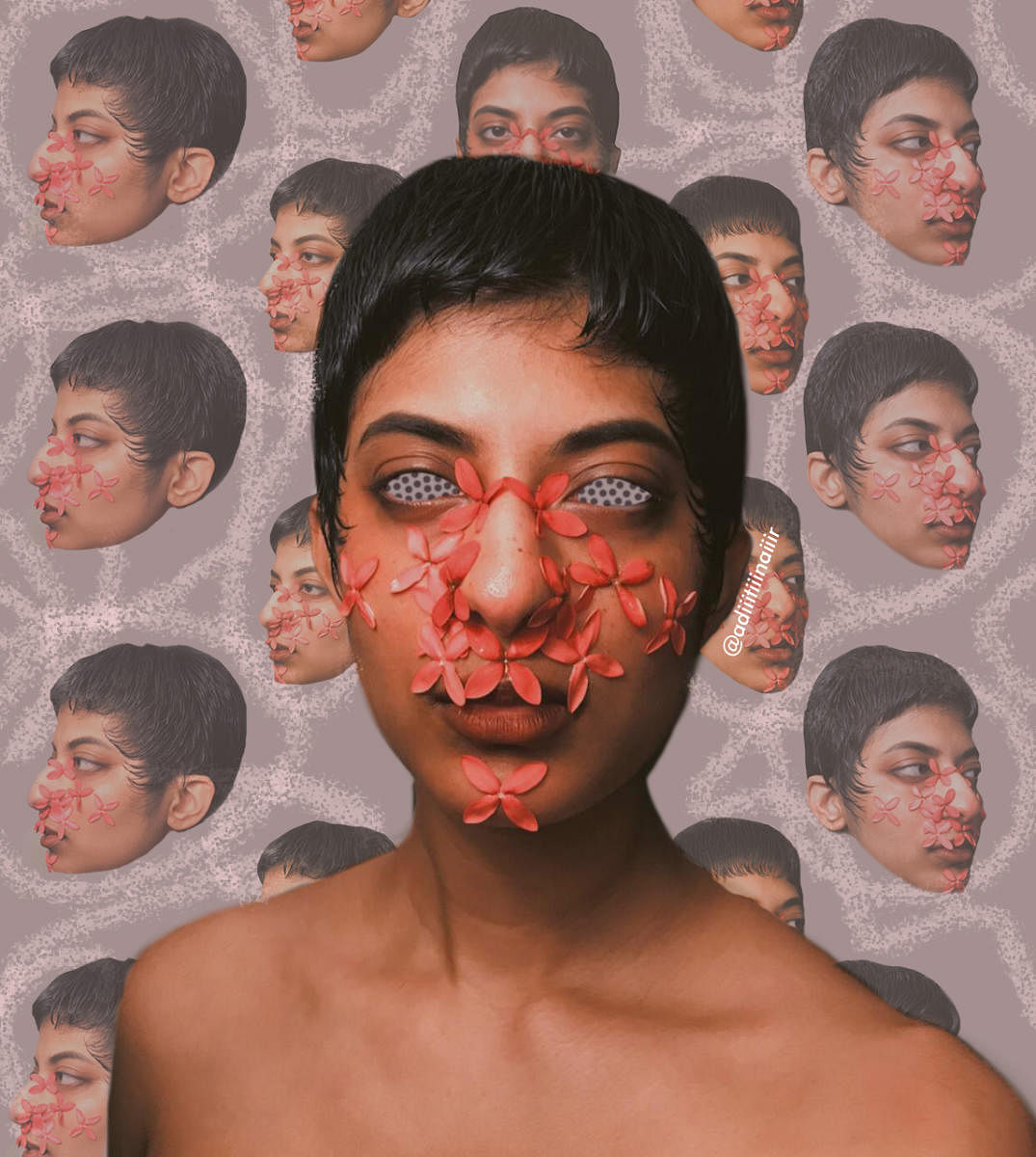
With no one else around during the lockdown, photographers and models have picked up the art of self-portraits. Photographer Navika Kaith, says she is used to being behind the lens. “I feel completely in control. I can fine-tune my frame to the best of my abilities,” she says.
She says the first challenge to self-portraiture was noticing all of her flaws. “But having the same subject over a number of pictures can challenge you to think more creatively,” she adds.
Being too self-critical was also a challenge for Ayesha John. “I had to keep reminding myself to extend myself the same kindness I extend to the people I shoot,” she says.
On the other hand, artiste Hrishikesh Saji felt self-portraits allowed him the privacy to be himself in front of the camera.
“There’s a comfort in taking pictures of yourself where you get to be completely free,” he says.
Fashion design student Aditi Nair also enjoys self-portraits more. “I feel like I can bring out my visions much better because I understand them better,” she explains.
Navika adds that being in front of the lens after being behind it can help you build confidence. “It’s a very liberating experience,” she says.
Not an easy task
“Finding the right frame can be tough as you are not handling the device. There is a loss of control,” says Navika. This, she says, means one has to be able to improvise.
Many self-portrait photographers have apps on their phones that control their camera, she doesn’t. “This means that I have to set up a self-timer and set up a reflective surface near the camera so I have an idea of what the shot looks like,” she explains. She also takes a few sample shots of her frame and adjusts it based on how it appears in images.
Aditi mainly shoots close-up portraits of her creative makeup looks, this means her glasses aren’t part of the picture.
“I have high power, so it’s difficult to be mindful of every element while partially blind,” she says. Her post-production helps her here. “I add illustrations and creative edits to the image to make it stand out more,” she says.
Hrishikesh employs a similar strategy. “I take about 70-100 images and end up with 10-15 good ones. But my trick is that I never discard images before editing them. Edits can do wonders and change the mood of an image drastically,” he says.
Ayesha says the only shortcut to a good image is practice. “Having someone who has experience with shooting self-portraits on a video call, while you create yours, helps you pick up the tricks quicker,” she adds.
Quick tips
Decide what you want to focus on in your image: Is it your clothes, makeup, location or a certain prop?
Frame your camera according to your area of focus. Your camera will mostly be static during a shoot, so if you want to capture movement, be sure to have a wide frame.
Light is an important factor. Take a few sample shots to see whether you feel more comfortable with indoor or outdoor lighting and what fits the mood of your image better.
Taking pictures of the same face can get boring, so experiment with textures and colours.
Editing can change an image drastically, don’t discard images before an edit.